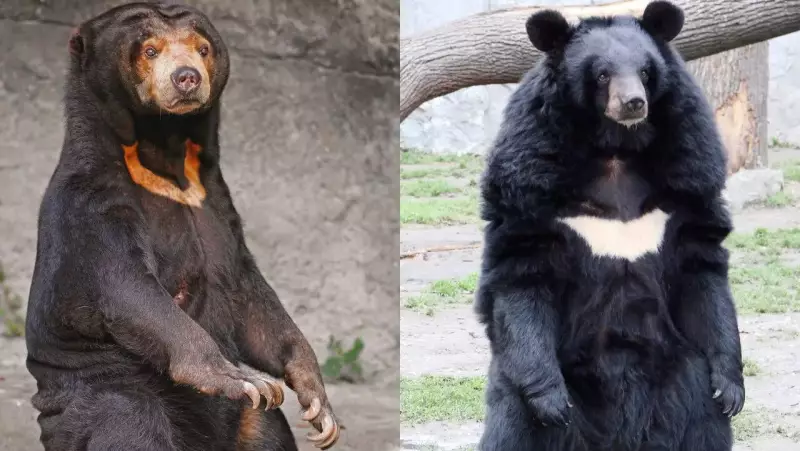
In the dense forests of Asia, two remarkable bear species navigate survival with strikingly different strategies. The sun bear and moon bear, while sharing the same continent, have evolved unique characteristics that make them masters of their respective domains.
The Physical Face-Off: Built for Different Battles
At first glance, these bears tell different stories through their appearance. The sun bear, Asia's smallest bear, sports a distinctive orange-yellow chest patch resembling a rising sun. Standing just 4-5 feet tall, this compact powerhouse boasts incredibly long tongues – perfect for extracting honey from deep within bee nests.
Meanwhile, the moon bear (Asiatic black bear) wears its namesake white crescent moon on its chest. Towering over its cousin at 5-6 feet, this larger bear possesses stronger limbs and broader shoulders, built for climbing and powerful movements.
Behavioral Contrasts: Personality in the Wild
Their behavioral differences are equally fascinating. Sun bears are primarily diurnal creatures, actively foraging during daylight hours. Their arboreal lifestyle keeps them mostly in trees, where they build impressive nests from branches.
Moon bears, however, prefer the cover of darkness. These nocturnal hunters demonstrate remarkable climbing skills despite their larger size. Their solitary nature contrasts with the sun bear's occasional social interactions.
Dietary Divergence: Nature's Gourmet Specialists
When it comes to dining preferences, both bears showcase specialized adaptations:
- Sun bears: True omnivores with a sweet tooth for honey, earning them the nickname "honey bear"
- Moon bears: Opportunistic feeders favoring fruits, nuts, and occasional small mammals
- Unique advantage: Sun bears' extra-long claws perfect for tearing into termite mounds
- Seasonal adaptation: Moon bears efficiently fatten up before winter hibernation
Habitat and Survival Challenges
Both species face mounting threats from human activities. Deforestation and habitat fragmentation push these magnificent creatures into smaller territories. Poaching for traditional medicine and the illegal pet trade further endanger their populations.
Conservation efforts face unique challenges with each species. Sun bears struggle with habitat loss in tropical forests, while moon bears confront threats across their broader territorial range spanning multiple Asian countries.
The Conservation Imperative
Understanding these differences isn't just academic – it's crucial for effective conservation. Protection strategies must account for their distinct needs, from the sun bear's tropical forest requirements to the moon bear's broader territorial patterns.
As climate change and human expansion continue to reshape Asian landscapes, recognizing what makes each species unique becomes our first step toward ensuring these remarkable bears don't fade into extinction.
